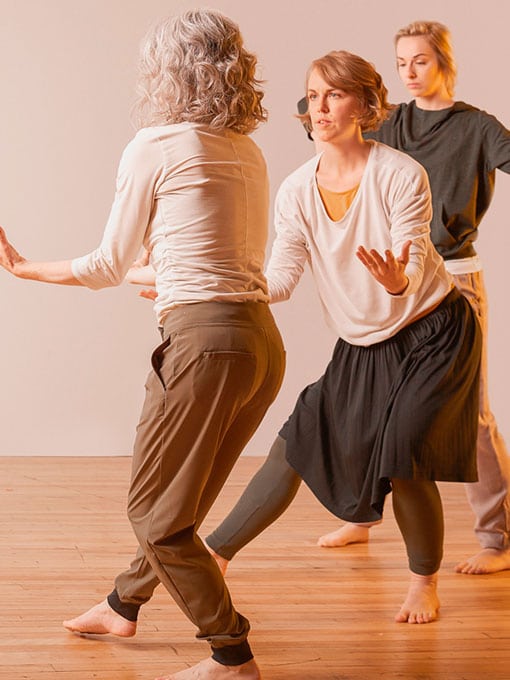dancetherapy
contactNEXT EVENTS
No Events
Dancetherapy is a unique type of psychotherapy that originates in the art of dance.
This method is based on the connection between the psyche and the body. If we strengthen and develop this connection, then the mental state and psyche will be healthier. During the dance, you can recognize, experience and express different feelings and emotions. In the process of dance movement therapy, it is possible to improve your communication skills and establish communication. During the session, trust develops, the ability to recognize and express emotions, awareness is trained and a positive self-image is formed. On a physical level, in the course of therapy, qualities such as balance, coordination and sense of rhythm improve. It increases motor diversity and the ability to improvise, and dance therapy helps reduce stress and develop a respectful and respectful attitude towards the body.

Discover the Dancetherapy
Dance therapy is based on the natural impulses of your body and is born from the depths of the soul. It can destroy many mental barriers and help you really find yourself. Spontaneously born movements can free us from disturbing thoughts. A person acquires a new way of thinking: through his body. In the process of such treatment, the person gains harmony and health
What is it for?
Studies have shown that dance therapy can be effective in treating mental health problems such as malnutrition, depression and anxiety. Some recent examples include:
- A study by The Arts in Psychotherapy (2007) showed that dance therapy had a positive effect on participants with symptoms of depression.
- A study by the American Journal of Dance Therapy (2004), in which 54 students participated in a program to prevent violence, dance therapy, showed that aggression among participants decreased and social behavior increased.
- A study by Alzheimer’s Care Today (2009) suggests that dance therapy can directly improve memory recall in people with dementia.
- A review of the American Journal of Dance Therapy literature indicates that dance therapy may be a good treatment option for children in the autism spectrum.
- Due to its social and physical components, motor dance therapy is also considered a treatment option for childhood obesity.
Benefits of dancetherapy
In the dance process, the brain integrates information from the visual, auditory, vestibular and somatosensory systems. To process all incoming information during movement, different parts of the cerebral cortex and subcortical nuclei are fired simultaneously. Dance regulates the level of serotonin and dopamine in the body. In turn, the level of concentration of these hormones is associated with fatigue, stress, insomnia and other factors. Dance promotes cognitive processes, level of concentration, creativity and spontaneity and establishes contact with internal resources.
People with psychological problems, as well as healthy people who want to find internal balance, find great benefits in dance therapy:
- Provides a safe way out of negative emotions and aggression
- It helps analyze and get rid of bad thoughts and feelings
- Change the attitude towards your body to a more conscious
- It helps to get rid of communication problems with strangers thanks to the communicative experience acquired in the group
- Increase self-esteem and develop creative skills.
- For those who often experience stress, dance therapy is a great way of channeling. In addition, it helps to solve problems such as jealousy, dissatisfaction with family relationships, fears, phobias, feelings of loneliness and increased anxiety.
History
The American dancer Marion Chase is the first dance therapist. Initially, I was interested in the emotional side of the dance and the feelings the dancer conveys. In 1946, he became convinced of the power of dance movements when working with hospitalized psychiatric patients. Marion worked with the most difficult patients, with whom verbal methods of therapy simply did not work. They were too complex and the main task, of course, when working with psychiatric patients is to improve their communication skills and body reintegration, to restore the person’s awareness of their body.
During the treatment, instinctively, the patients experienced involuntary joy, which began to have a therapeutic effect. Marion worked successfully for many years and was able to highlight a large number of psychological components of dance that have a beneficial influence. In the 1960s, research on nonverbal behavior and the body’s role in mental health problems also influenced the practice. In 1966, the American Dance Therapy Association (ADTA) was created, in which training and certification standards were developed in this area.
MORE INFO?

